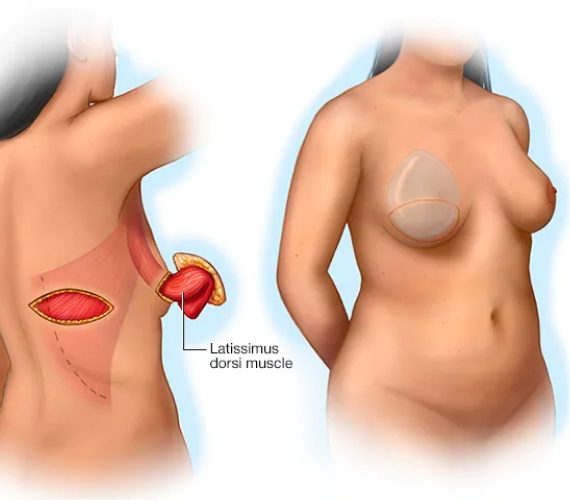Login
Center for Breast Reconstruction
Latissimus Flap with Implant
The latissimus flap with implant might be a good procedure for you.
What is Latissimus Flap?
The latissimus flap is lifted from the back area and rotated around to the chest area through a small tunnel on your side.
The tissue stays attached at all times to its blood supply from the arm pit area. With the latissimus flap, often there is not enough tissue volume (fat) in the back to create a full breast mound so a small implant is often required.
The latissimus flap with implant might be a good procedure for you if you have had radiation to the chest in the past. The radiation may damage the chest skin and muscle. Adding the healthy, well perfused skin and muscle of the latissimus flap can help mitigate the risks associated with radiation.

A latissimus flap may be a good option for you if you don’t have enough tissue available in other parts of the body, (i.e., abdomen, buttocks, thighs) to create a new breast. The procedure is longer than implant surgery alone. It involves healing of more than one wound. It requires at least a one-night hospital stay.
Things to Consider
Contact Us
For more information or to schedule an appointment, call our office at 302-623-3605.

